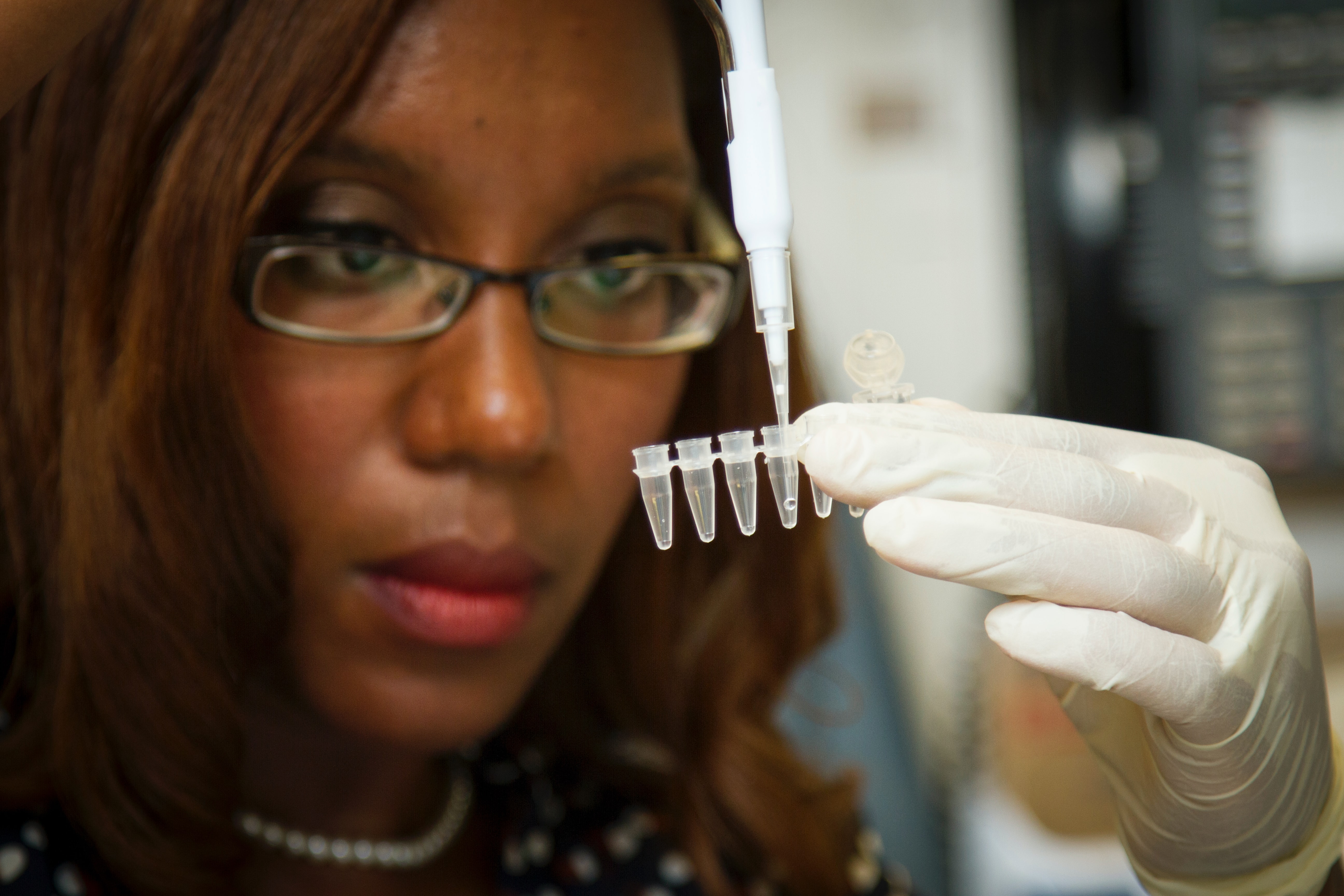Viruses- Part 3
“OH NO! They’ve been bitten by the infected! What do we do?!”
“Relax. The incubation time for viruses is at least a day or two, most longer. We’ve got time.”
“But we could be next!”
“Okay… Have you been bitten?”
“No?”
“Did you remove your facemask? Forget to wash your hands? Bring the bodily fluids anywhere near your face?”
“No?”
“Then. You. Are. Fine. We’ll wash up and then have them self-isolate to see if they develop symptoms. If they start to get sick… we just ditch ‘em.”
“That’s your plan?!”
“Do you have a miracle cure in that bag of yours? I’m no cleric. Survivor’s the name, and self-preservation is the game.”
So, Why Use a Virus?
Now that we’ve covered how viruses work/replicate, now we can start delving into ways we can incorperate viruses into SciFi beyond just being an infectious agent (I must apologize in advance, as we must talk about zombies, and you will discover that I am not a fan).
Once again, here is a list of reasons to use viruses in your work that range from “maybe rethink” to “love it, write it”:
1) I want to write about a Zombie Apocalypse!

Heavy sigh.
Okay, I’m gonna stop you right there. I vehemently hate zombie stories. Movies, comics, you name it. I don’t mind if zombies are used for comedy, but it’s hard for me to take any hardcore zombie story seriously.
Why? Because they make no sense! Take rabies for example: rabies is a virus that passes through biting and contact with animal saliva. Symptoms are very “zombie like,” in that folks with rabies suffer from spasms, mental deterioration, fever, foaming at the mouth, etc. Now, why aren’t we living in the “rabies apocalypse?”
BECAUSE IT’S REALLY HARD TO PASS VIRUSES THROUGH BITING.
Not that there can’t be an outbreak, but think about it: how easy is it to break skin in a fight by biting? When you’re being attacked, the thing you’re probably really good at is not being bitten. The thing is, you’re probably going to defend from a bite attack by grabbing the neck of the assaulter and pushing back, effectively keeping a bite at bay. And even if they bite do manage to bite you, they still have to break through skin. Why would something that’s dead and emaciated have enough force to bite through your skin?
Now, I know you’re going to point out that technically, it’s the exchange of bodily fluids that is a zombie virus’s mode of transmission; biting is only one mode of infection. I’ll give you that, but then I’ll also put out other viruses that use that same mode of transmission: HIV, Hepatitis B, Hepatitis C, and Ebola. Note that while there have certainly been brutal outbreaks and epidemics of these viruses, none of these viruses have caused a world-stopping, all-infecting pandemic (which is the main reason to fear a zombie virus). And again, that’s partially because of the mode of transmission.
“But,” you say, “What if it’s airborne? Or what if it’s passed through the water supplies? Or respiratory droplets like the flu?”
Fine, that fixes the biting problem, but that still doesn’t change the fact that biologically, zombies make no sense. They’re dead: why do they have the drive to eat? They literally can’t metabolize diddly squat. And if they can’t metabolize anything, how on earth are they moving? Muscles and nerves need energy to move. How does it run after its prey? Just… WHY!?!?
I’m not even going to touch “The Walking Dead.” No. Just, no. Long story short, I dislike zombie stories. A lot.
(Also, why on earth is it always a virus from a research facility? AND WHY IS THE INCUBATION TIME OF THE VIRUS ONLY A COUPLE OF MINUTES/HOURS?!?)
2) I want to write about living in a global pandemic!

…Looks around precariously at 2020 quarantine life. While that’s a viable option, maaaaaaaaybe hold off on it? Maybe wait a few years?
Nothing wrong with writing a pandemic story, but I think we can all agree that it’s not only bleak, but also pretty boring. The most exciting portion of a pandemic to read would be from the perspective of the scientists, the politicians, a patient, or a health care worker. And while these stories need to be told, as the grueling hours a nurse or doctor spend caring for patients need to be addressed/appreciated by everyone, it may not be the most conducive for a SciFi story.
That’s if you’re writing a hyper-realistic story, though. Maybe you’re writing a story where the setting is in the 1800’s, or on another technologically enhanced planet. Then you’ve got some stuff to work with.
The reason why this is so high up on the list, however, is because of the current world situation.
3) I want to write about a virus outbreak that was caused by scientists for bioterrorism.
If zombie stories did not exist, and COVID-19 were not so prominent right now, this would be at the top of my list. This type of story is told way too often, and as we’re seeing with COVID-19 right now, it’s a prevalent story in our culture that leads to distrust of the scientific community at the WORST times.
I know there have been stories covering “scientist made deadly virus” that are beloved by readers, you need to realize that there is money to be made in studying and curing current diseases right now. Key word: curing. I can’t think of a good reason why anyone in my pathology field would try to make their own deadly virus.
“But what about government funded research? Bioterrorism?!”

…My fast answer is that it’d be cheaper and faster for the government to just invest in creating deadly chemicals or to unleash an already-available virus. Or just use anthrax. Or smallpox. These are very real bioterrorism threats, a threat that is heightened by the fact that our societies tend to live in close proximity. While the fear of creating a new strain of deadly virus is a possible, albeit low threat, I would avoid this type of story because it really does put a scientific community into a bad light (see the discourse around COVID-19’s origins).
Sure, we can talk about corruption in government-scientist relationships. That’s a viable story onto itself. However, knowing how much research is still being conducted to deduce some of the fundamentals of different viruses, I would imagine that making a bioterrorist virus is excruciatingly, mindbogglingly difficult. And with how interlinked the countries of the world are now (again, as shown by COVID-19’s spread), a government releasing a super deadly virus intentionally into a world would be the equivalent of shooting one’s self in the foot; the virus will most likely make it back to the country of production and ravish it as well. Again, see COVID-19.
Deadly viruses suddenly emerge from nature all the time without the help of scientists, HIV and COVID-19 for example. Many times, it’s due to the incorporation of new DNA and cross-species transmission that can produce the deadliest of contagions. You don’t need scientists to make it. But you do need scientists to help fight it.
From a scientists point of view, we’d greatly appreciate it if the prevalent “lab-made virus” stories were… less prevalent.
4) I want to write about making a vaccine for a virus.

This is a pretty good one, because there are multiple steps and trails that scientists have to go through. First step would be to sequence the genome (relatively easy enough to do nowadays with our current sequencing technology, although it can be tricky and time consuming).
Next, you’d have to figure out the overall structure of the virus and the individual components. One would need to determine the protein sequence of each component through, in simplest terms, digestion of the protein and then reconstruction of the protein (this is called Edman degradation) or mass spectrometry. Personal experience with mass spectrometry confirms that this is actually pretty f$$$ing hard. Figuring out the 3d protein structure possible due to something called cryo-electron microscopy, which can allow us to deduce 3d protein structures. This is not simple in the slightest. My biophysics class tried to walk us through x-ray crystallography, a similar method for determining protein structures, and it was mind boggling.
And that’s just step one. The next step is figuring out WHICH PART your body creates antibodies to (your body won’t recognize the whole virus during an infection, just key parts of it). And this is still waaaaaaaaaaay before trials can even start.
I’ll be writing a blog post in the near future about vaccine development, so I’ll keep this section thankfully short. The point is that this process has multiple steps and has the opportunity to have a lot of stuff go wrong at each point and would have multiple labs working on it simultaneously, trying to get funding for it and obtaining the best data. The big issue with this, though, is that the actual lab processes are pretty darn boring to just read about.
You’d need to choose the best point in this process when you’d start telling the story (I would choose at the start of the human trials. Probably don’t need to go through a lot of the other stuff precluding those). I can see earlier timepoints in vaccine development working really well as more of a backdrop to other types of plots (love stories, revenge plots, etc.)
5) I want to use viruses as a viable tool to cure diseases on my story.

Now we can start getting to the fun stuff! This is called “gene therapy,” and is actually in use today in clinical trials. Remember how I said that viruses can be hijacked by scientists?
For example: I used a virus in one of my lab rotations to examine neuron connections. We altered the small viral DNA by slipping a code in there that produces GFP (Green fluorescent protein). The little GFP protein emits a green light when excited. That means that I can look at specific neurons that light up green and easily examine their structures.
What does that mean? Well, if I can use a virus to bring a GFP gene into a cell, I can do the same for, say, an insulin gene in a diabetic patient’s pancreatic cells. Or I can use an engineered virus called an “oncolytic virus” to target cancer cells in immunotherapy.
Fun fact: for some experiments using CRISPR genome editing, Adeno-Associated Viruses (AAV’s) are used to get the CRISPR vector into the cells of interests. In fact, AAV’s are a very common way that scientists use to introduce DNA into a cell, as are Lentiviruses.
“But wait! Couldn’t you use that for some sort of bioterrorism act?”
Sure. You could go that route, although please refer to #3 of this list.
To be clear, we’re trying to think beyond bioterrorism here, be it intentional or accidental. For example, I know that the movie “I Am Legend” uses “gene therapy viruses,” presenting an engineered measles virus meant for immunotherapy as the cause of the zombie apocalypse. But it just makes one groan. You mean to tell me that they didn’t go through hundreds of clinical trial testing and miss that? You’re telling me they didn’t monitor their patients like freaking hawks? You’re telling me that they wouldn’t engineer the virus to ensure that it CAN’T replicate and possibly kill the host? (You can do that, by the way).
(For the record, the original “I Am Legend” had the origin as a bacteria, not a human engineered virus, which I think worked better for so many different reasons.)
Maybe your scientists are trying out a Lentivirus (retrovirus) delivery system for a gene that can cure an inherited disease, but they find that the process works, but for only a portion of the population. For the other portion, the gene is placed in the wrong place, but still gives the host unexpected benefits. Or maybe it’s the answer to your scientist’s woes, as no other procedure to introduce a drug into patients has worked, but maybe if you can get the cells to produce the drug on their own by using a retrovirus…
I am just saying, the possibilities are endless. Something that can come up with gene therapy, though, is that there is a chance of side effects; you are placing a pathogen into someone’s system.
6) I want to use viruses to introduce new genes into populations.

More fun stuff! And to clarify, this is different from #5 in that the virus does not have therapeutic uses, and I personally would not use this as a bioterrorist method.
You could have a virus meant to for medicinal use (see #5 above) that, when placed next to a specific enhancer or promoter (parts of DNA that allow genes to be transcribed), creates a protein that forms a chiton shell over your skin. Or, the gene is placed in backwards (which can happen) and we have a novel protein that is surprisingly beneficial, like a pathway that causes more rods in your eyes and makes you able to see better at night, like a cat. (Biologically possible night vision, baby!)
This entry also implies that you’re aiming to change the entire population with introducing a useful non-zombie gene, and that in order to do that, you have to have the initial viral infection target an unusual set of cells: the gamete, or sex cells (i.e. sperm or eggs). If you just have the individual infected, the person’s offspring probably won’t be affected by the gene insertion because there’s no way for the gene to be passed to the person’s kids.
However, if you have the virus target the sex cells, this would permanently affect all offspring and subsequent generations. The initial person may not have that gene insertion, but you’ve permanently changed the human population this way. And, as a bonus, if you infect the sex cells, the cells with the inserted gene would not be limited to a specific cell type.
My PI (head of my lab) has suggested also using this to introduce genes into a population that would make the population more susceptible to developing nasty diseases like Alzheimer’s. While this post is trying to steer away from having “lab made viruses” used for bioterrorism, this idea does put an interesting spin on #3 if you are dead-set on using lab-originated viruses. Make it deadly, but not like a normal virus.
7) I want to use viruses as tools in the fictional laboratory setting
You know, this is actually how we usually use viruses in a real laboratory setting, and it doesn’t get enough credit in science fiction.
Viruses, as previously mentioned, are commonly used as vectors (carriers) for carrying DNA material to cells, whether that DNA carries a new gene or a duplicated gene.
What’s so cool about that is that you can make a mouse produce human proteins this way. You can also delete genes in cells this way. I know it’s not flashy or intense, but it would be a breath of fresh air if I saw this in a story. Just… using viruses in a lab correctly. Studying them with appropriate procedures. Not getting sick from the virus we’re studying because we’re actually keeping things clean and under lockdown (yes, we have specific rooms and equipment for studying/using the nastier viruses like COVID-19 and Ebola. We aren’t about to get sick from our own work).
The Takeaway?
Yes, you could go the “bioterrorism” route, but I hope this (embaressingly passionate) post shows that there are so many other ways to utilize viruses that folks rarely explore. I’ve said it once, and I’ll say it again… viruses are so cool!
I would normally put a post after this, covering stories that have done this well, but.. I’m going to be straight with you all. I haven’t read one story that uses viruses well. Send me titles of books if you think you can prove me wrong, but I haven’t come across a single book that uses viruses well. And don’t get me started on movies (so…many…zombie…movies…GAH!) Maybe Contagian is the best virus story out there, since it’s pretty dang accurate in many aspects, but I have yet to watch the whole movie at this time. Maybe after the pandemic.
We’ll probably revisit viruses in the future once things have cooled down with COVID-19. I don’t want to fatigue everyone with virus-talk for too long.
Until then, the next post will be a fun, non-virus post before we dive into (as requested), vaccines!
Also, the biggest takeaway from this post is: don’t make the zombie apocalypse come from a virus. Make the zombies come from a necromancer losing control. Make it a curse. Make the virus cause a vampire apocalypse. But please… (sobs) no more zombies!
